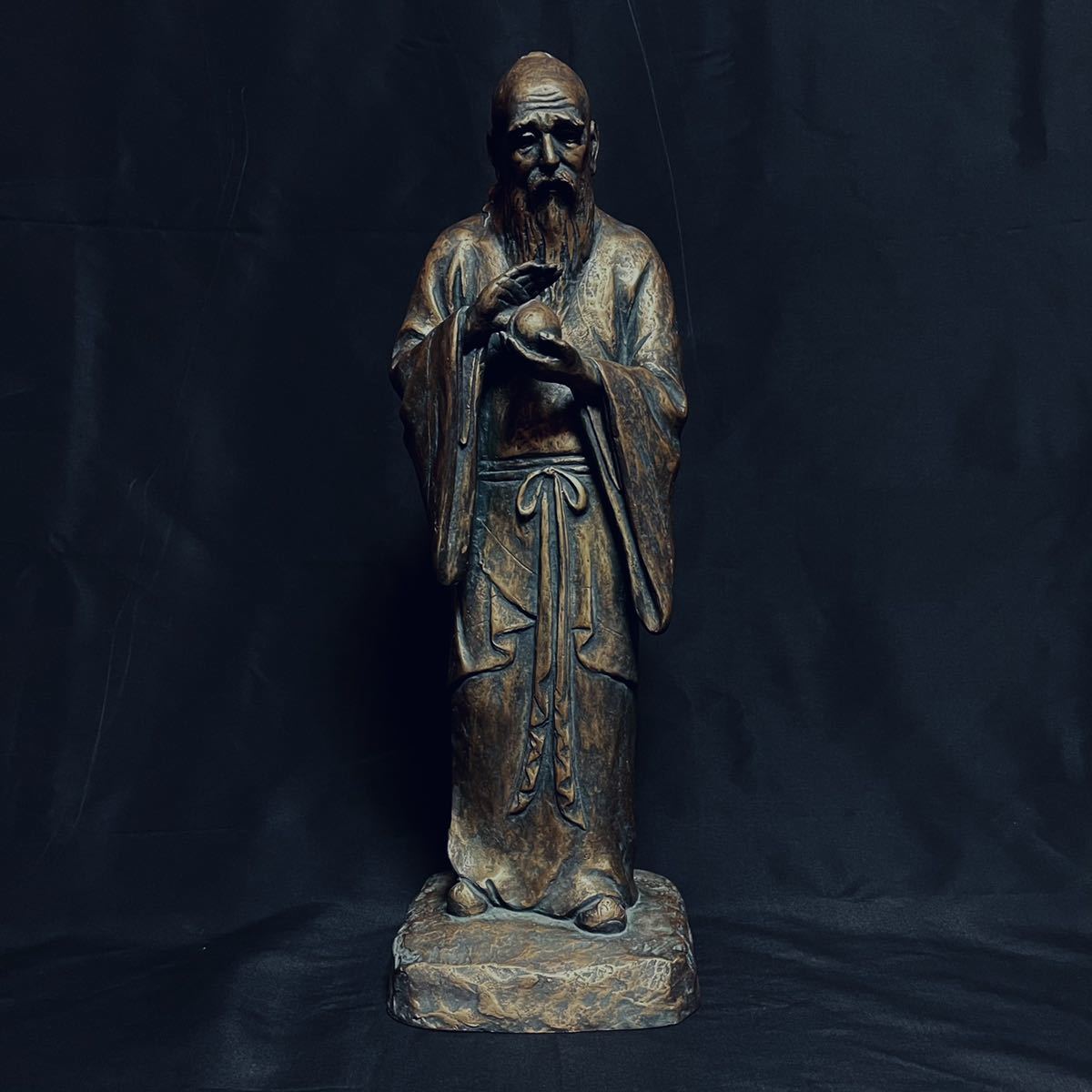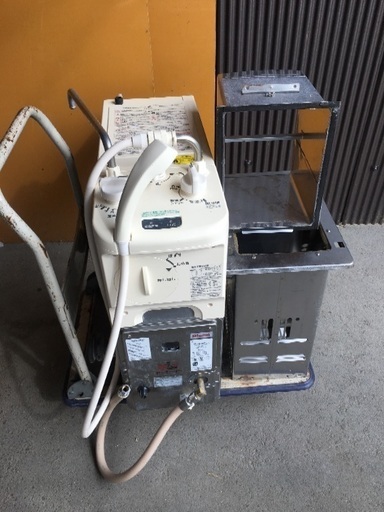
【特大】北村西望 不老長寿 ブロンズ像 銅像 52.5cm 仏教美術 仏像 希少 人間国宝
 タイムセール
タイムセール
999円以上お買上げで代引き手数料無料
商品詳細情報
| 管理番号 | 新品 :04335638 | 発売日 | 2025/06/08 | 定価 | 39,000円 | 型番 | 04335638 | ||
|---|---|---|---|---|---|---|---|---|---|
| カテゴリ | |||||||||
【特大】北村西望 不老長寿 ブロンズ像 銅像 52.5cm 仏教美術 仏像 希少 人間国宝
ご覧頂きありがとうございます。
【商品紹介】
■作品名:北村西望 作 不老長寿
■ブロンズ像/作品寸法:高52.5cm横17cm奥17cm
■正規箱あり/桐箱寸法:高64.5cm横26.5cm奥26.5cm
■品 銅製 桐箱/
一部緑青が目立つ箇所があります。写真をよくご覧になりノークレーム、ノーリターンでお願い致します。(写真四枚目)
又、写真の写り具合によっては実際のものと異なる場合がございます。
予めご了承下さい。
■作品解説■
北村 西望(Seibou Kitamura)
1884 12月16日
長崎県南高来郡南有馬村白木野字宮野木場に生まれる。
1903 京都市立美術工芸学校彫刻科入学。
彫刻とは、木を彫ることぐらいしか頭にないまま彫刻家への志を立てる。
生涯の最愛の友であり、ライバルである建畠大夢と出会う。
1912
東京美術学校彫刻科を主席で卒業。
1914
郷里にて結婚式を挙げ東京へ戻る。
1915
西望の長男「治禧」(はるよし)誕生。
第九回文展に「怒涛」を出品、最高賞(二等賞)を受賞。
1916
第十回文展に「晩鐘」を出品、特選主席を受ける。
建畠大夢・池田勇八・国方林三ら4名で研究会「八手会」(やつで)を結成。
1917
「光にうたれる悪魔」が第十一回文展推薦となる。文展常連出品者から文展作家となる。
1919
第一回帝国美術院美術展覧会彫刻部審査員となる。以後歴任。
1921
東京美術学校教授に任命される。千々石村に橘中佐像建てられる。(1954年復活建立)
1923
寺内元帥騎馬像完成、東京の三宅坂に設置。(1943年の銅像供出で撤去され鋳潰される。)
1925
帝国美術院会員となる。
1930
山県有朋元帥像が完成し、霞ヶ関の陸軍大臣官邸に置かれる。 (戦時中の供出を逃れ上野に移され、現在は井の頭彫刻園に置いてある。)
1938
「板倉退助翁」像完成・国会議事堂内に設置。
児玉源太郎大将騎馬像完成し、満州の新京児玉公園に設置される。
1944
朝倉文夫と共に銅像救出委員会を組織。銅像供出の阻止運動を行う。
東京美術学校を退職・従三位勲四等を受ける。
1945
矢那瀬村に三年間疎開。この疎開中、必要に迫られ新しい技法石膏直付け法を思いつく。
1953
井の頭自然文化園の土地を東京都から借り、アトリエを建設、そのアトリエに移る。
1955
長崎平和祈念像完成、8月8日除幕式。
1958
文化勲章・文化功労賞拝受。
1965
日本芸術院第一部長となる。
1969
社団法人日展会長となる。紺綬褒章を授与される。
1972
島原城に「西望記念館」完成。
1973
原城本丸に「天草四郎像」設置。
1974
社団法人日展名誉会長となる。
1976
新宮殿に「天馬」を献納。
1977
広島市中央公園 鯉「飛躍」設置。
1979
西望公園完成・記念館オープン。
1981
東京都青梅市御岳山頂「畠山重忠公像」設置。
1985
西望公園・記念館復元工事完成。
1987 3月4日
逝去、享年104歳。
丁寧に梱包して配送致します。
ご検討宜しくお願い致します。





























